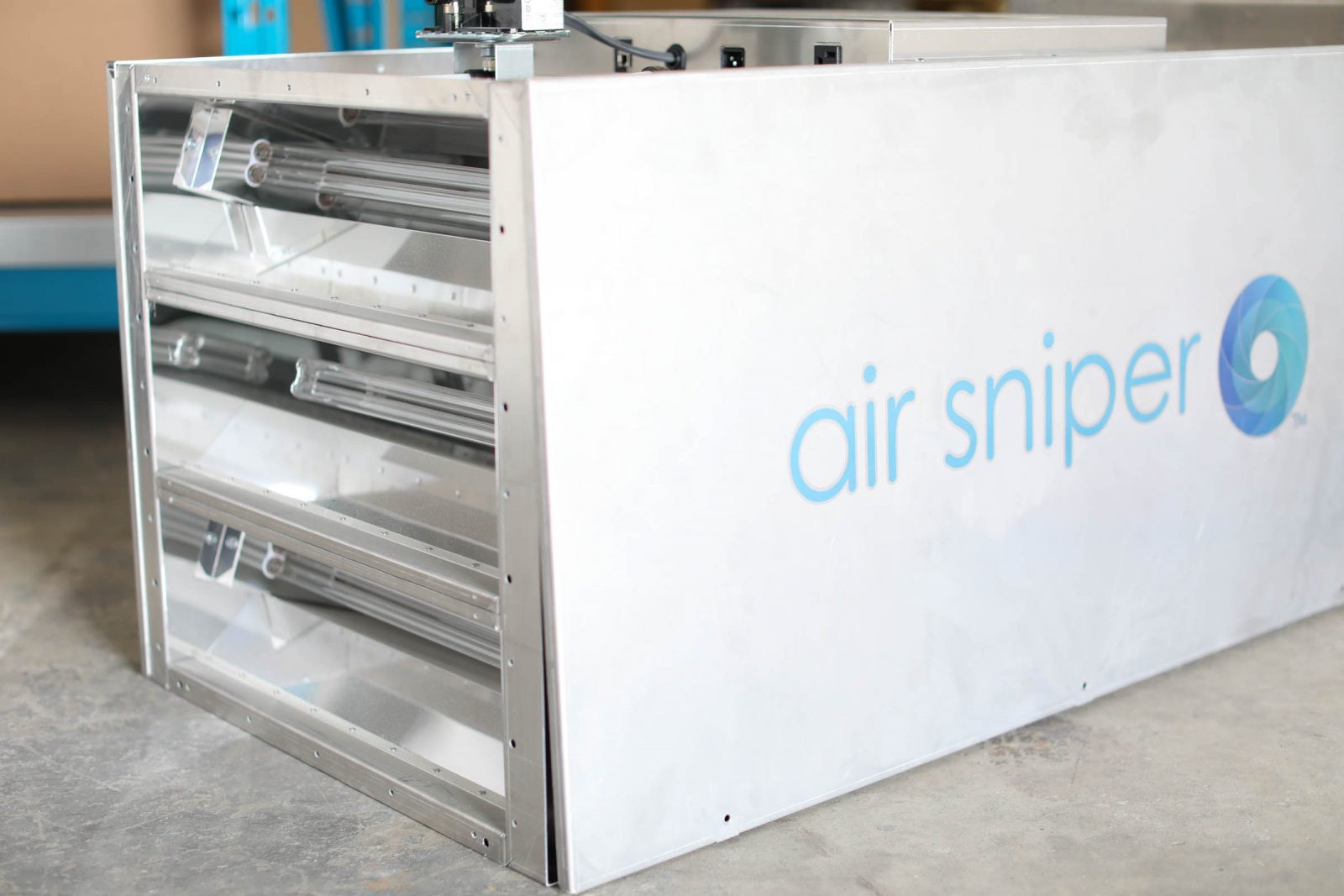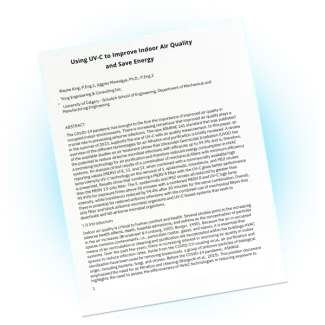When we think of the word “clean,” images of freshly wiped countertops or vacuumed floors may come to mind. For some, a quick sweep of dust under the rug may suffice, while others regularly undertake a full cleaning routine. However, in certain spaces—such as hospitals, laboratories, and food-processing areas—cleaning takes on a whole new level of importance.
In these environments, cleanliness is not just about appearances; it’s about ensuring that pathogens, viruses, and bacteria are eradicated to the highest standards. Germicidal UV light – particularly germicidal UVC – plays a crucial role in this high-level sanitation.
The Challenge of Defining “Clean”
Cleaning can vary depending on the location and the need. In a home, the goal may be to remove visible dirt, dust, and grime, while in a clinical environment, cleaning often means removing dangerous microbes that can cause illness. Simply cleaning isn’t enough for facilities requiring sterilization and sanitization – such as hospitals and dental clinics. Sterilization goes beyond just wiping surfaces; it involves killing microorganisms on equipment and within the air.
In these high-stakes environments, the definition of clean must include microbial destruction. That’s why it’s vital to go beyond the physical act of cleaning and adopt technologies that ensure a comprehensive approach to sterilization.
The Importance of Sterilization in Healthcare
Hospitals, doctor’s offices, and clinics all operate under strict regulations for cleanliness, but the real difference between being “clean” and “safe” lies in sterilization. Sterilization completely eliminates all microbial life forms, which is critical in environments where patients may have weakened immune systems.
Healthcare facilities rely heavily on scheduled cleaning, sanitization, and sterilization routines to ensure that every surface and piece of equipment remains free from harmful microbes. However, traditional cleaning methods aren’t always enough to maintain the required level of cleanliness.
To address this challenge, many healthcare facilities use advanced air and surface sterilization techniques, including the implementation of germicidal UVC technology. Unlike traditional chemical cleaning agents, germicidal UVC can eliminate airborne and surface-borne pathogens with unmatched efficiency.
Traditional Methods of Air Sanitization: HEPA Filtration
Air quality is critical to maintaining cleanliness in clinical and healthcare settings. Traditional air sanitization methods, such as High-Efficiency Particle Air (HEPA) filters, have been a go-to solution for capturing airborne contaminants. HEPA filters use randomly arranged fibres that trap particles like dust, mould, bacteria, and viruses.
While HEPA filters effectively trap particles to a specific size, they have limitations. They do not actively destroy pathogens but capture them within the filter, requiring regular maintenance to ensure efficacy. This leaves a critical gap in protection since some airborne pathogens may still pose a risk if not properly managed.
As pathogens become smaller or evolve, there may need to be more than just mechanical filtration to provide the sterile environment needed in healthcare and other high-risk industries.
UVC Air Sanitization: A Game-Changing Solution
Unlike HEPA filters, which physically capture particles, germicidal UV light actively destroys microbes’ genetic material, rendering them incapable of reproducing or causing infection.
Germicidal UV light works by emitting ultraviolet rays at a specific wavelength (between 200 and 280 nanometers), which is particularly effective at breaking down the molecular bonds within the DNA of microorganisms. The most effective wavelength for this process is UVC, which operates around 254 nanometers.
Because of its high-energy output, germicidal UVC light is particularly potent at deactivating many pathogens, including bacteria, viruses, and moulds. This makes it ideal for sterilizing air, surfaces, and even water.
How Does UVC Light Work?
To understand how germicidal UVC works, it helps to imagine light waves as invisible energy bouncing through the environment. Similar to the way sunlight can burn our skin with prolonged exposure, UVC light can penetrate the cell walls of microorganisms. Once inside the cell, UVC light damages the nucleic acids – DNA and RNA – within the pathogen, inhibiting its ability to replicate.
Here’s a step-by-step breakdown of how the process works:
- Emission: A UVC light source emits ultraviolet rays at the germicidal wavelength.
- Exposure: Microorganisms such as bacteria, viruses, and fungi are exposed to the UVC rays.
- Absorption: The UVC light is absorbed by the DNA and RNA molecules of the microorganisms.
- Damage: The light causes molecular damage by disrupting the bonds within the DNA structure, effectively scrambling the genetic code.
- Inactivation: Once the DNA is damaged, the microorganism cannot replicate or function, leading to its eventual death or deactivation.
Unlike traditional air filtration systems, which trap airborne particles, germicidal UV light neutralizes pathogens in the air without needing to remove them physically.
The Unique Advantages of Germicidal UVC
When it comes to air and surface sanitization, germicidal UVC offers several key advantages over traditional cleaning methods:
- Efficiency: UVC light acts quickly, neutralizing harmful pathogens in seconds.
- Continuous Protection: UVC systems can operate around the clock, providing continuous disinfection without human intervention.
- Chemical-Free: Unlike traditional cleaning methods that rely on harsh chemicals, UVC disinfection is completely non-toxic and environmentally friendly.
- Comprehensive Coverage: UVC light can reach areas that are otherwise difficult to clean, such as air ducts, crevices, and hard-to-reach surfaces.
- Air and Surface Sterilization: UVC light can sterilize air and surfaces, providing comprehensive protection in healthcare settings.
Applications of Germicidal UVC in Various Industries
While healthcare has been the primary adopter of germicidal UV light, other industries are beginning to recognize the potential benefits of UVC technology in their sanitization efforts.
Food and Beverage Industry
The food and beverage industry must adhere to strict hygiene regulations to prevent contamination. Germicidal UVC systems are used to sterilize packaging materials, food preparation surfaces, and even the air in processing plants. This eliminates harmful bacteria like E. coli and Salmonella, reducing the risk of foodborne illnesses.
Public Transportation
The spread of infectious diseases is a major concern in buses, trains, and airplanes, where people are in close proximity. Germicidal UVC systems are installed in ventilation systems to sanitize the air and reduce the spread of airborne pathogens.
Educational Institutions
Schools and universities have begun adopting germicidal UV light technology in classrooms, lecture halls, and common areas to reduce the risk of outbreaks, especially in light of recent global health concerns. UVC air purifiers and surface disinfection systems help maintain a safer learning environment.
Hospitality and Travel
Hotels, resorts, and cruise ships are high-traffic areas where maintaining hygiene is essential. Many are turning to germicidal UVC solutions to disinfect guest rooms, public spaces, and ventilation systems to offer a cleaner and safer experience for travellers.
UVC vs. Other Disinfection Methods: A Comparison
Although germicidal UVC offers unparalleled advantages, it is worth comparing it to other disinfection methods commonly used in various industries.
| Disinfection Method | Effectiveness | Application | Cost | Environmental Impact |
|---|---|---|---|---|
| Chemical Disinfectants | High, but limited to surfaces | Requires manual application | Moderate | Can produce harmful chemical residues |
| HEPA Filtration | Effective at trapping airborne particles | Air filtration only | High (due to replacement filters) | Low impact, but requires energy |
| Germicidal UVC | Extremely high; destroys both air and surface pathogens | Air and surface sterilization | Moderate to high | Eco-friendly, chemical-free |
While chemical disinfectants are effective at sanitizing surfaces, they have potential drawbacks, such as chemical exposure and manual application. Similarly, HEPA filters are effective but require regular maintenance. Germicidal UVC, on the other hand, offers a holistic solution for air and surface sanitization without needing constant upkeep.
The Future of UVC Disinfection
As we move into a future where health and hygiene remain paramount, germicidal UV light will continue to expand across multiple sectors. Advances in UVC technology are making it more affordable and accessible, which means we can expect to see it implemented in everything from office buildings to personal homes.
In particular, the COVID-19 pandemic has accelerated the demand for better air and surface sanitization solutions. As a result, researchers are constantly innovating and developing more powerful and efficient UVC systems capable of addressing even the most resistant pathogens.
Conclusion
In a world where health and safety are non-negotiable, germicidal UVC technology is an invaluable tool in our fight against harmful pathogens. From hospitals to schools, food processing plants to public transportation, germicidal UV light is providing businesses and organizations with an efficient, chemical-free way to maintain a higher standard of cleanliness.
Whether you’re looking to protect your patients, employees, or customers, germicidal UVC offers a proven and effective method for sterilizing air and surfaces. Investing in this cutting-edge technology can ensure a cleaner, safer future for everyone.
Do you have any questions? Then, ask them to the Air Sniper manager at 1-888-338-9549.



